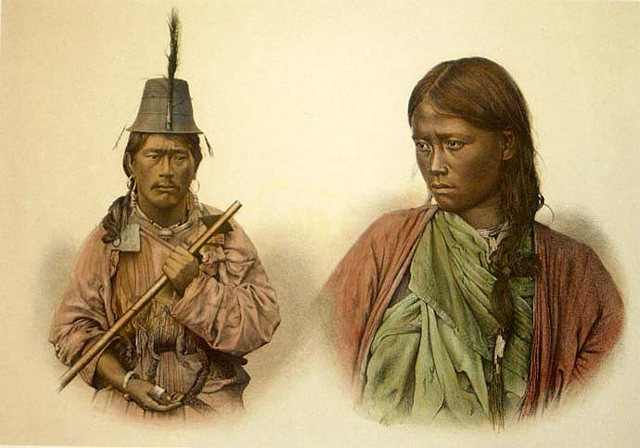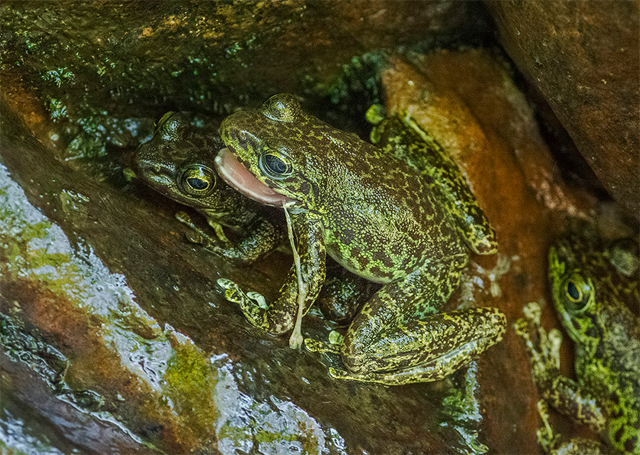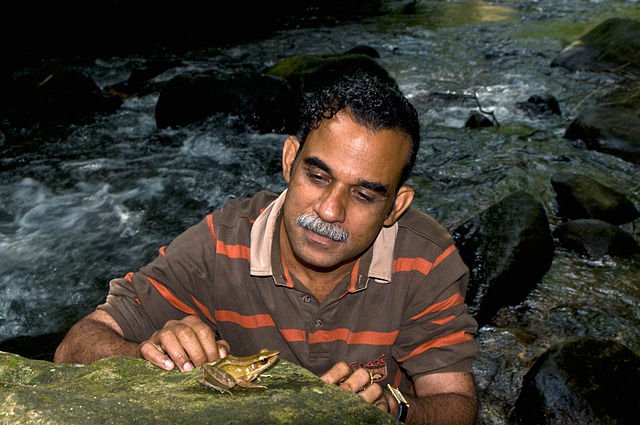
Geoffrey Gorer (1967) wrote that, according to tradition, the Lepchas began transitioning in the mid-18th century from a hunting and gathering society to a people who relied primarily on cultivation. But Gorer questioned that time scale. He felt that even a century earlier, in the 17th century, they were probably cultivating rice and millet on the lower slopes of the valleys, yet supplementing their agricultural produce with wild foods they hunted and gathered.
He argued that while the Lepchas used to do a lot of hunting, by the 1930s the practice was already dying out. During that period, they relied on hunting for a lot of their food in the less fertile regions of Sikkim, but in Lingthem and the other villages of the Dzongu there was far less hunting than before. One of the reasons for the decline of hunting was the stigma that Lamaism placed on the killing of animals, a feeling that extended to those who were not lamas.
Furthermore, the increased amount of land devoted to agriculture, both for cultivated crops and for domestic animals, diminished the need to eat game meat. In addition, the demands of agriculture on the time of the villagers allowed less time for hunting. Gorer wrote that “if a young man wants to go hunting … he usually has to sneak away when his elders are not looking, and is likely to get a good scolding when he does return for withdrawing his labor from the fields (p.85).”
A report published last week by an Indian news website brings the story of Lepcha hunting up to date. They have taken to hunting frogs. The amphibians are being hunted by the Lepcha from the mountain torrents and rivers for both the meat found in their hind legs and for their supposed medicinal values. According to Basundhara Chettri, Assistant Professor of Zoology at the Sikkim Government College, the consumption of frog meat for curing ailments has not been scientifically validated.

Chettri said that local people collect the amphibians during the monsoon season, from June through September, during the dusk and early evening hours. “This also overlaps with the breeding season of the frogs,” she said. A wide range of amphibians are harvested, including the hill-stream frog (Amolops formosus), which is known locally as “peeray paa,” the mountain cascade frog (Amolops marmoratus) and others.
She said that the Lepcha do not harvest the frogs for commercial purposes—only for consumption. Unfortunately, the harvesters are unaware of the impact of their collecting on the local frog populations. They view their practice simply as a way of utilizing a natural resource so they are not wasted. “They believe that frogs are nature’s gift to them like fruits and die out after some span of time even if not collected. Hence, extraction is one way of harvest before the natural resources are wasted or rotten. The perception is that if they collect more, the number of amphibians will increase in the subsequent years,” Chettri said.

S.D. Biju, a biologist specializing in amphibians at the University of Delhi, said that harvested frogs legs are available in markets in northeast India in Manipur and Nagaland. “Though habitat degradation is the major issue for declining frog population, over-harvesting is also a concern,” he said. Another scholar who focuses on amphibians, Barkha Subba, said that the hunting represents a significant threat to their populations in Sikkim. She pointed out that the frogs tend to breed in the same streams each year, making them highly susceptible to pressures from human hunting in the same areas. It can lead to local populations of frogs being extirpated.
Subha told the journalist that while the Lepchas no longer rely on hunting and gathering for the bulk of their food, they still preserve an annual festival to celebrate and worship a hunting god. As part of that festival, the Lepcha men spend a day in a forest hunting. Subba said that during her interviews with the men, they told her that since India has passed laws such as the Wildlife Protection Act of 1972, they do not risk hunting bigger game animals. Instead, they “go for small animals like frogs for the sake of the ritual of hunting.”
She added that since most young people are now being educated in the schools, they are no longer much interested in the hunting rituals. However, the various Indian amphibian experts consulted for the news story feel that the frogs in Sikkim are still vulnerable and that their numbers need to be carefully monitored.